#deccan art
Text
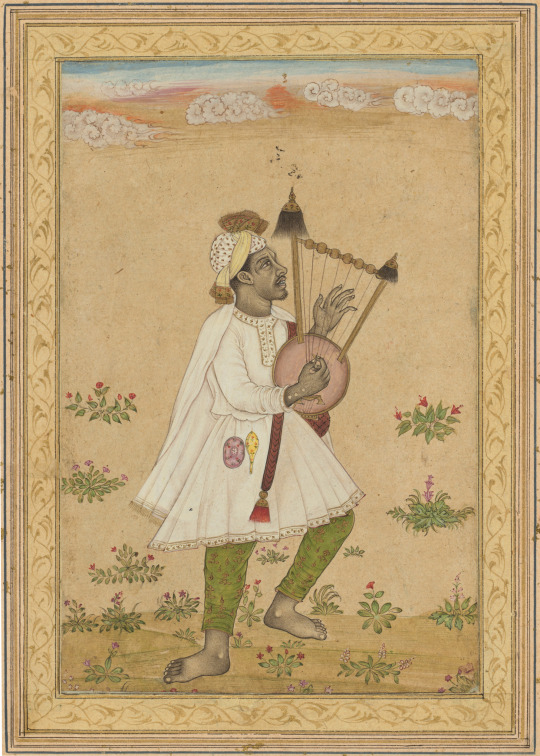
African Lyre Player, unknown Deccan artist, between 1640 and 1670
#art#art history#India#Indian art#South Asia#South Asian art#Deccan art#poc in art#17th century art#Cleveland Museum of Art
111 notes
·
View notes
Text

Painting, in opaque watercolour on paper, depicting a lady, perhaps Chand Bibi of Bijapur, India seated on a rock in a lake near a herd of elephants. This painting is in the collections of the Victoria and Albert Museum in the UK.
(Sultana Chand Bibi (1550–1599 CE) was the Regent of Bijapur Sultanate 1580-1590, and regent of Ahmednagar Sultanate, in India holding the throne for her minor nephew.)
After all, whomst among us has not bathed in a lake of lotuses with our herd of elephants in attendance?
#deccan#dakhani#dakhani art#deccan art#mughals#india#south asia#south asian art#indian art#chand bibi
0 notes
Text

Unknown, Large calligraphic composition of THE NADA 'ALI QUATRAIN IN THE SHAPE OF A BIRD
Deccan, 19th century or earlier
ink and gouache on cloth, on stretcher, in perspex box frame
2K notes
·
View notes
Text

Detail from 'The Queen of Sheba and King Solomon with attendants', Deccan, Central India, c. 1780.
Via Jordan Quill
62 notes
·
View notes
Photo

Prince with two ladies 1800-1900
9 notes
·
View notes
Text


currently obsessed with this Wikipedia editor's rendition of the Deccan Traps volcanic event, appropriately titled “Rajasaurus en las traps del decán” {x}
15 notes
·
View notes
Text

Qutub Shahi Tomb, Hyderabad
4 notes
·
View notes
Text
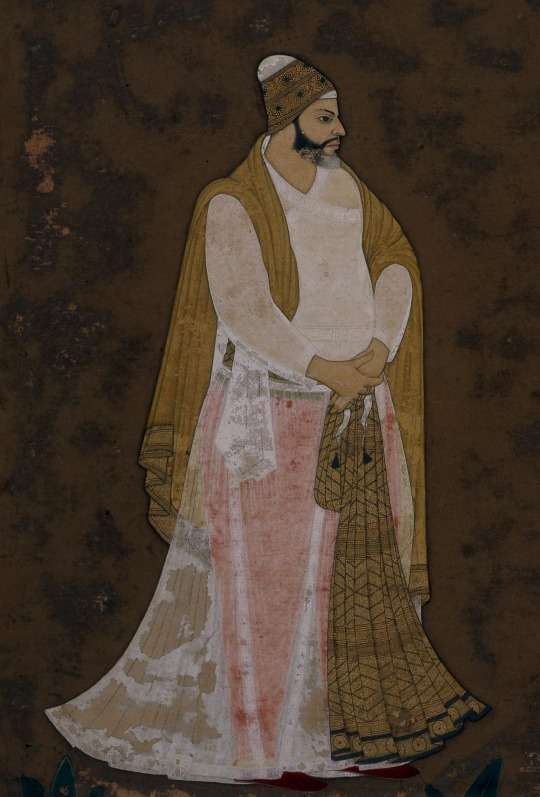
Portrait of a courtier at Bijapur
Deccan, India, ca. 1610 AD
British Museum
1 note
·
View note
Text
“The scene is not so much one of violent combat as of containment, recognising the strength of the opponent.”
The more I read about Rama Raya, the more his hubris seems to be the cause of his downfall.
#art history#reading list#deccan sultanate#vijayanagar#Bijapur Sultanate#Vijayanagar's defeat is framed too much in the hindu muslim binary that it takes ages to get to the bottom of the actual political situatio
1 note
·
View note
Text
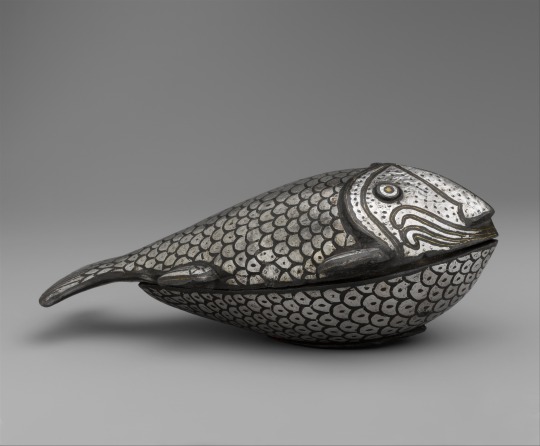
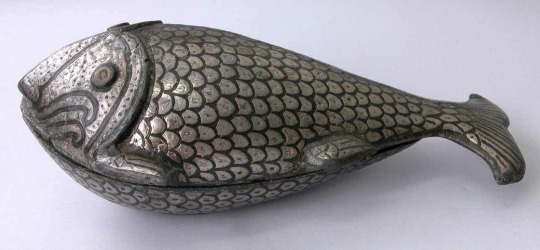
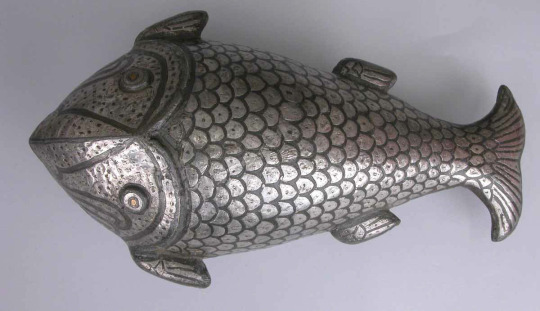
#FishFriday:
Fish-Shaped Box
Probably made in India, Lucknow or Hyderabad, 19th c.
Zinc alloy; cast, engraved, inlaid w/ silver & brass (bidri ware)
L 9 1/4 in (23.5 cm)
The Metropolitan Museum of Art, New York 19.135.15a, b
“Although the technique of inlaying metal known as bidri was invented in the Deccan in the 17th century, and Hyderabad remained a center for this type of metalwork into the 1800s, Lucknow, in northeastern India, also became an important center for production of bidri ware in the 18th and 19th centuries.”
#animals in art#fish#metalwork#bidri ware#Indian art#South Asian art#19th century art#box#effigy vessel#Metropolitan Museum of Art New York#Fish Friday
352 notes
·
View notes
Text
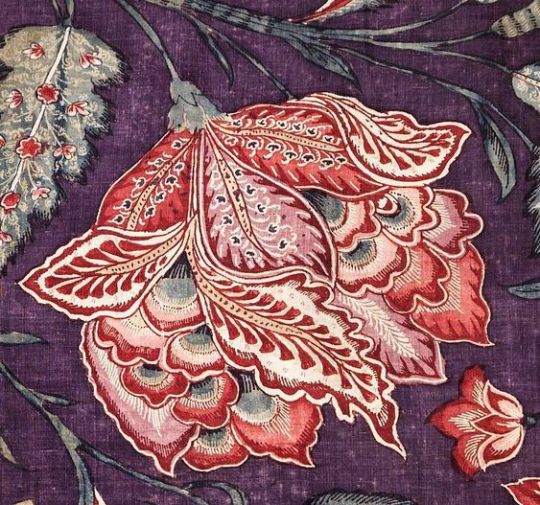

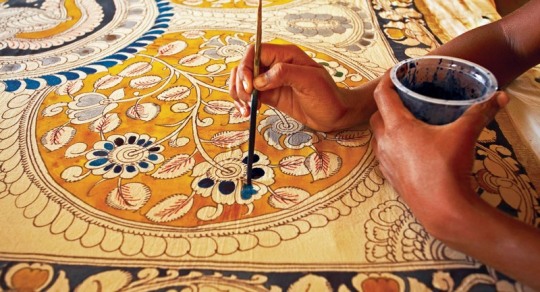
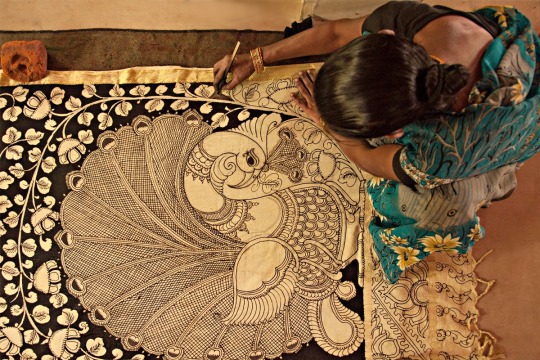

Kalamkari textiles of India.
The Persian name Kalamkari or ‘qalamkari’ is derived from the words kalam (pen) and kari (craftmanship) which translates into drawing using a pen. While there is a mention of these fabrics in ancient scriptures, this art received great patronage during the 16th-17th centurywhen the Golconda Sultanate ruled the Deccan. These wealthy sultans supported this craft and so did the Mughals who were their successors. It was also popular with the British who used these textiles for decorative purposes. Influenced by the Persian school of art, Kalamkari is being practiced for centuries in Andhra Pradesh and the artisans who practiced this art were known as ‘qalamkars’.
The entire process of manufacture is complex and involves as many as 17 steps with multiple rounds of dyeing, washing and boiling the fabric. The initial fabric is sourced from various places like Coimbatore, Erode and Tirupur in Tamil Nadu which is first washed thoroughly to remove any impurities in the form of grease, wax and dirt.
91 notes
·
View notes
Note
hello! wut met art books in particular r u planning on reading?
hello! listing the ones i've read + plan to finish
sacred visions: early paintings from central tibet
al-andalus: the art of islamic spain
sultans of the south: arts of india's deccan courts 1323-1687
byzantium and islam: age of transition 7th-9th century
byzantium: faith and power 1261-1557
the great wave: the influence of japanese woodcuts on french prints
+ list of the most downloaded titles of 2022 that i'll get to one day
ive read one on central asian art and another on representations of medusa + european pietas which were all very nice too! full catalog here, just filter it to read / download <3
#have fun tell me what u read#ref: mine#ref#book recs#asks#have the first two downloaded i'll read those and the last one i think as a companion 2 my current read even if its moved on from japonisme
131 notes
·
View notes
Text
“Zeenat-un-Nisa survives Aurangzeb by many years. She is witness to the rapid disintegration of the Mughal empire as it recedes away from the Deccan and Bengal and gathers itself around the tombs of the old Sufi saints in Delhi. Zeenat-un-Nisa is the calm constant in a court in which seven padshahs rule in quick succession after Aurangzeb dies, and they are indiscriminately murdered, or blinded, or beheaded. The very last padshah of Zeenat-un-Nisa’s long life is Raushan Akhtar Muhammad Shah, great-grandson of Aurangzeb, more commonly known as Muhammad Shah Rangeela. Zeenat-un-Nisa is an old lady of seventy-six when the nineteen-year-old Muhammad Shah becomes Padshah Ghazi. Muhammad Shah is as different from Aurangzeb as it is possible to be. He is a discerning patron of the arts and will preside over a glittering salon where the poets and musicians will create works of endless beauty as Shahjahanabad prepares to burn. He is also, without doubt, something of a bacchanalian, fond of dancing girls and mystifyingly given to wearing a lady’s tunic and pearl-embroidered shoes while attending his mushairas (gathering of poets). Like the free-spirited matriarchs who presided over the zenanas of Babur and Humayun, Zeena-un-Nisa is cherished and respected till the end of her long life. But despite the bewildering exuberance of Muhammad Shah Rangeela’s court, night approaches for the Mughal empire. Zeenat-un-Nisa will be the last of the padshah begums, a lonely survivor of a golden age, watchful but voiceless guardian of a glorious legacy.”
- Ira Mukhoty, “Daughters of the Sun: Empresses, Queens and Begums of the Mughal Empire”
#history#historicwomendaily#indian history#india tag#mughal empire#mughal era#zeenat-un-nissa#mine#queue
16 notes
·
View notes
Text

Unknown, Two Girls Dancing
Deccan, Aurangabad
1700
opaque watercolor on paper, heightened with gold
418 notes
·
View notes
Text

The Queen of Sheba and King Solomon with attendants. Unknown artist. Deccan, Central India, c. 1780.
#art#indian medieval art#early modern art#queen or sheba#king solomon#deccan#indian art#islamic art#south asian art#india#south asia#medieval art
211 notes
·
View notes
Text
Buraq (الْبُرَاق)
Buraq/Boraq/الْبُرَاق is islamic mythological creature that served as the mount of the Islamic Prophet Muhammad (s.) during his Isra and Mi'raj journey. The buraq is also said to have transported certain prophets, such as Prophet Ibrahim (a.)
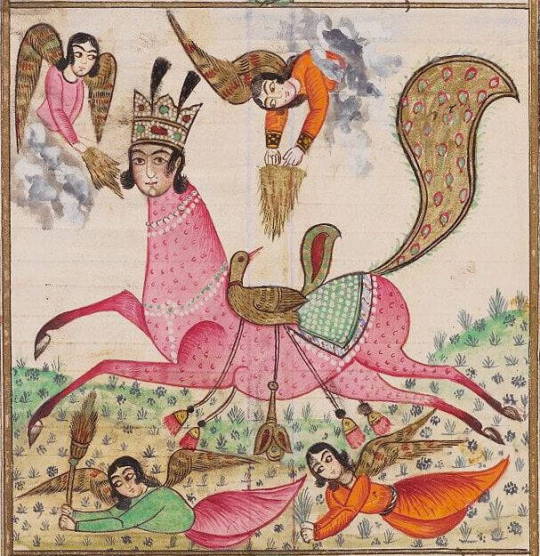
Gender of Buraq
In hadith literature, Buraq's gender is not clear. At earlier, many viewed buraq as a typically masculine figure. Ibn Sa'd described al-buraq as a feminine creature with long ears and buraq was often rendered by painters and sculptors with a woman's head in later eras. Writer and translator Yasmine Seale argued that Buraq was AFAB, some artists became uncomfortable depicting the prophet mounted on female mythical creature. In contemporary, queer discourses, buraq is presented as a genderfluid, androgynous, non-binary being.
al-Buraq in Medieval Islamic Arts


The earliest picture of al-Buraq appeared in the 14th-century history of Rashid al-Din. The image stands out among representations of the magic steed, as here it is shown to have a human torso and arms in which it is holding the Qur’an. In the image buraq's unusual tail is tipped with a warrior angel.
From 14th century, the burāq myth, visualized on the basis of ancient depictions of griffins, sphinxes, and centaurs, became a favourite subject of Persian miniature painting.Buraq also appeared in the Ottoman manuscripts.The Ottoman representation of Buraq is different from Persian representation.
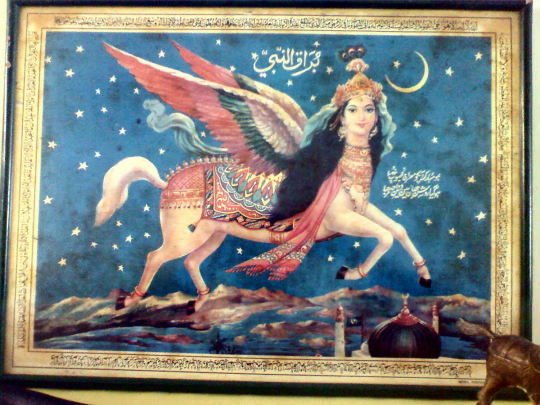

Later representations shows buraq in the form of a steed with a female head and dappled body. It is often featured in the illustrations to Nizami Ganjavi’s Five Poems.
In Near East & Persian art almost always portrays buraq as feminine or gender fluid - a portrayal that found its way into Indian, Deccan art. This may have originated from an interpretation of the creature being described with a "beautiful face" as the face being human instead of bestial.
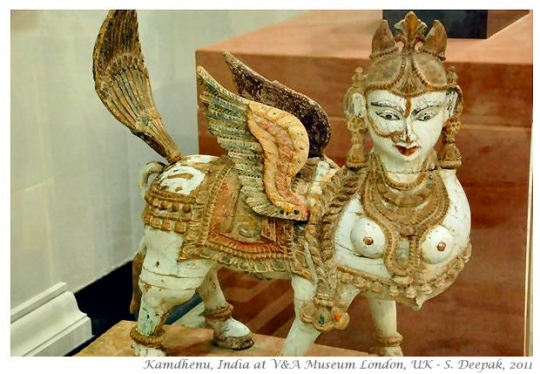
6 notes
·
View notes